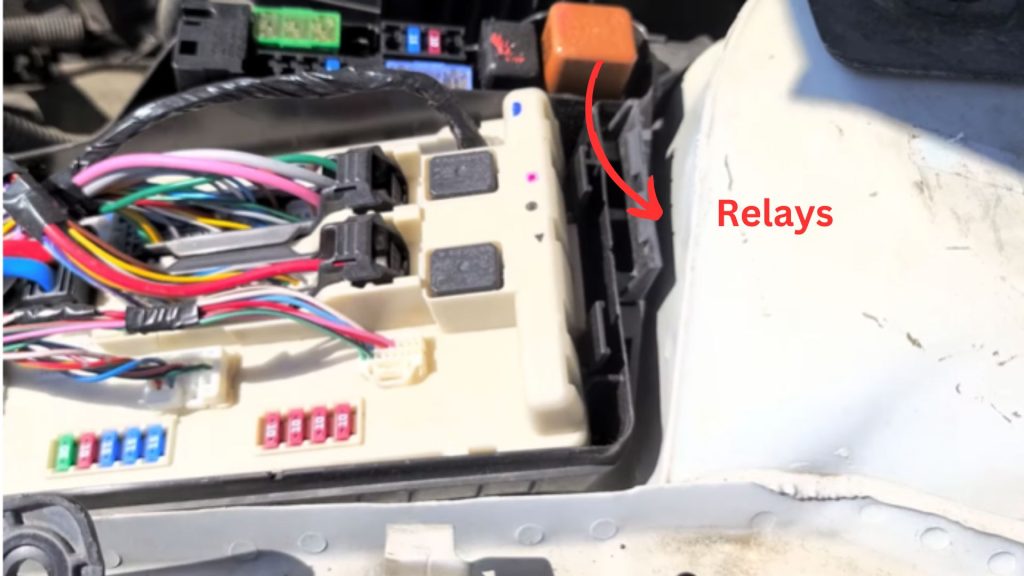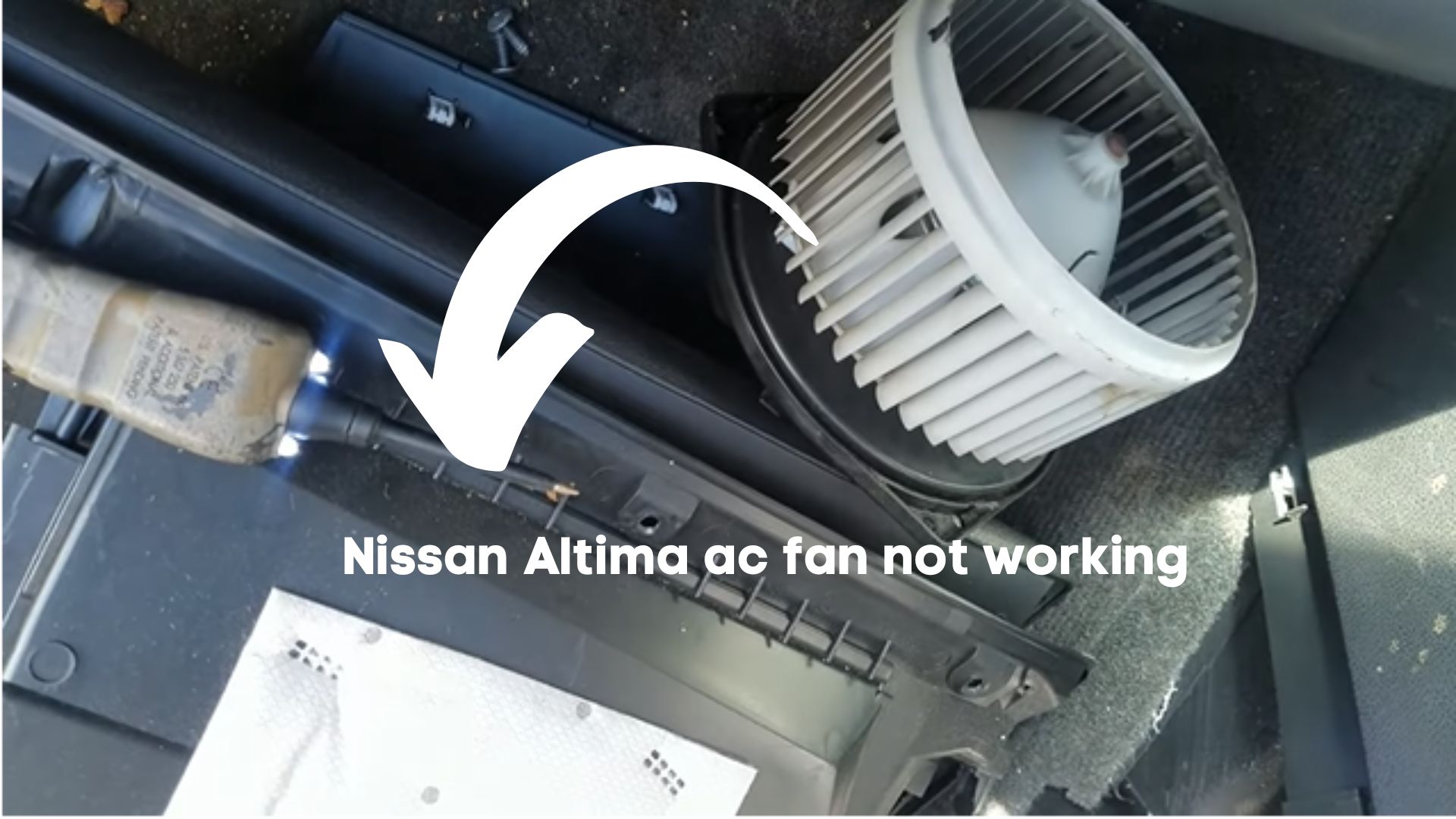Air conditioners in cars have been around for decades. According to this paper from University Politehnica Timisoara (S Ratiu, V Alexa, I Laza, V G Cioata), 20 percent of all vehicles from the United States had air conditioning by the 1960s. By 2007, that figure had risen to 90 percent.
Therefore, AC fans that don’t work are a concern for most drivers. This study from the University Politehnica of Bucharest (Faculty of Industrial Engineering and Robotics) thinks noisy air conditioners that don’t generate enough cold air are a bigger concern to consumers, along with moldy smells.
However, a defective AC fan will cause those issues and more. You can blame a faulty or inactive AC fan on the following factors:
- The Nissan Altima has a bad resistor. This component controls the blower motor’s speed. Adjusting the AC fan speed should compel the resistor module to change the current flowing to the blower, either increasing or decreasing it. A fault in the resistor or control module can interfere with the AC fan’s work.
- The climate control unit has failed. The climate control unit signals the resistor module when you adjust the AC fan speed.
- The fan is broken. The experts at Rainbow Muffler and Brake expect the cooling fan to push refrigerated air into the cabin. Air will stop flowing through the vents once the fan breaks.
- The fan has obstructions. If you’ve ruled out clogging, check the filters. Dirty filters will disrupt airflow.
- The fan switch is broken.
- The fuse has blown. Lehew Tech has a video revealing the location of the fuses and relays in a 2006 Nissan Altima. If you have a different model, check the internet. Use the car’s VIN to locate the model’s documentation. It will guide you to the fuses and relays.
Technically speaking, this information only matters to a technician. They will diagnose and repair your Nissan Altima’s AC fan. But what if you prefer to fix this problem yourself? You can follow these troubleshooting steps:
1). Start By Turning The AC ON
Use the manual to verify that you’ve followed the correct instructions. Some people think the AC fan has stopped working when they haven’t even turned it on. Do you see the appropriate icons on the dashboard indicating that your AC is active?
If the fan doesn’t respond to the controls, you have a broken fan switch. But don’t be so quick to remove and replace it. You need a mechanic with expertise in the Nissan Altima’s electrical system to troubleshoot the AC circuit.
For all you know, the problem may originate from loose connections or broken wires. As you can see, you can’t solve this problem alone, not unless you have relevant experience in this field.
2). If The AC Is Running, Place Your Hand Over The Vent
Do you feel air blowing through the vents? Adjust the speed settings. Again, check the manual and follow the instructions. You might have lowered the speed to the lowest setting, which is why air won’t come through the vents.
If you’ve adjusted the speed upward, but nothing is happening, you have a defective AC blower. You won’t know whether the fault lies with the blower motor or resistor until you investigate further.
3). Don’t Concern Yourself With The Blower, Resistors, And Fuses Until You’ve Checked The Airways
You may blame the weak airflow coming through the vents on a broken fan when the fault lies with blockages in the cabin air filter.
A dirty filter will impact heating and cooling because it interferes with the airflow. It can also generate strange smells. Use a vacuum or compressed air to clean it. This isn’t a perfect solution because it removes most visible dirt particles, but not all of them.
Capital One recommends replacing the filter every 15,000 – 30,000 miles. Cleaning a dirty filter will only provide mild improvements in the air conditioner’s performance.
4). External Obstructions
Internal obstructions are not your only concern. Blockages in and around the grill, bumper, and condenser air can disrupt the airflow. Fortunately, you can identify and remove debris in these locations with relative ease.
5). Inspect The AC Belt
If you’ve opened the hood to look for obstructions, you might as well inspect the AC belt. Naturally, you should turn the engine off before proceeding. If the belt is broken, replace it. If you can’t even find the belt, install a new one.
What about the tensioner? If the belt is loose, get a new belt tensioner. Eventually, you will turn your attention to the compressor. Start the engine and set the AC and blower motor fan to the highest settings.
Listen to the compressor. If you can’t hear it cycling on and off, something is wrong. You should also worry if the compressor is cycling on and off too rapidly. One potential explanation is low refrigerant. You can solve that problem by adding more refrigerant.
Otherwise, check the fuses and relays. The AC compressor won’t work with bad fuses and relays. One other potential culprit is the wiring. Replace damaged wires.
6). Replace The Bad Fuse
Find the fuse box and identify the fuse associated with the AC fan. Use needle nose pliers to pull it out. If your fuse looks like the bad fuse, replace it. Make sure the new fuse matches the amperage of the old fuse.
7). Swap Bad Relay

The blower motor cannot work with a bad relay. The manual will show you where to find the relays in your particular Nissan Altima. But you typically find them under the steering wheel (lefthand side).
If the relay is to blame, swapping it out should fix the problem. You can find a wiring diagram online. It is common practice to disconnect the battery before replacing the relay.
8). Blower Motor Resistor
Unplug the resistor. Do you see burnt terminals? That points to a bad resistor. Test the resistance between a common point and the various pins on the connector to measure the resistor’s functionality. The Ohm values you record should match the information in the car’s documentation.
A defective blower motor can strain the resistor, causing it to overheat or burn out. In other words, replacing a dead resistor isn’t enough. You should also install a new blower motor. Otherwise, the new resistor will fail.
Interestingly, the blower motor can still work even when the resistor fails. However, you can’t access high-speed settings. Don’t be surprised if the settings get stuck at a particular speed. If you’re hesitant to replace the blower motor, test it with a multimeter.
You should turn the AC fan on beforehand. A normal voltage reading (roughly 12V) proves that you have a faulty blower motor, especially if it has manifested warning signs such as strange whirring sounds, a weak airflow, and smoke from the vents.
Even though blower motors can last a decade, they can fail within a few years because of factory defects, moisture, and overheating. You should eliminate other potential culprits, such as leaking refrigerant, dead compressors, and bad blend door actuators.
Sometimes, the AC stops working because of multiple problems. Just because you’ve replaced the blower motor doesn’t mean the AC’s issues will fade. This is why you’re better off hiring a mechanic. They can perform a more comprehensive diagnosis.
Don’t ignore the warning in this paper from KHT Industrial Engineering and Management, which highlights the fact that a car’s air conditioning has a significant impact on fuel consumption. A defective air conditioner can lower your car’s fuel efficiency.

